Suffern's historic Lafayette Theater turns 100: Behind the curtain of the iconic moviehouse
- Oops!Something went wrong.Please try again later.
Picture this.
It is March 1924. The world has been to war and endured a global pandemic.
The Twenties are roaring, albeit a bit less so in Suffern. Still, the Avon plant is cranking out bottles of perfume and the population is about 3,500.
Imagine your job is swinging a sledgehammer at an iron works, another of Suffern’s major industries at the time. The work is loud, hot and dangerous. Your arms resemble Popeye’s. You seek diversion and find it in vaudeville shows and at moving pictures, which have yet to learn to talk.
Along Lafayette Avenue in the early 1920's, there were plenty of screens to separate you from those few coins in your pocket and take your mind off the clang of that sledgehammer.
One screen was upstairs in a dilapidated wood-frame building; another was in a former Catholic church; a third was the newest at the time, about a decade old by March 3, 1924, when something decidedly different arrived on the scene in Suffern. That's the day the cavernous Lafayette Theater opened its doors.
If you had the required 25 cents (10 cents for kids), you could sit in a leather seat under a towering and ornately decorated ceiling, listen to a pipe organ and watch Ramon Novarro in "Scaramouche." Novarro, billed as "the new Valentino," played a swashbuckling Frenchman who joins a traveling troupe of actors but vows to avenge the death of a friend at the hands of a beautymarked aristocrat.
And just like that, you weren't in Suffern, anymore.
Sledgehammer? What sledgehammer?
A centennial celebration
Next week marks the 100th anniversary of the Lafayette, a movie palace that, like the village and the county it serves, has seen good times and bad, war and another global pandemic. Through the efforts of angels and acolytes through the years, it has somehow managed not to fall victim to the multiplexer's carving knife and remains a jewel of a single-screen wonder.
In the weekends leading to the anniversary, Lafayette owner Ari Benmosché has been screening movies from each decade of the theater's life, working his way backward to a weekend of centennial events, including:
A screening of the 1927 sci-fi silent film "Metropolis" with live organ accompaniment;
A concert "Neil Berg's 100 Years of Hollywood," led by award-winning Rockland composer Neil Berg, starring Broadway veterans singing songs from Jolson to "Titanic" to Disney; and
“Everybody Should Be in A Band,” a documentary following participants in Music for Life Creative Arts Therapy, tapping into their love of music. It will be followed by a live performance by some of the film’s subjects.
Like nothing they'd seen
Patrons who arrived at the Lafayette in that first week of March 1924 encountered something they’d likely never seen, unless they’d been to Manhattan or some other major burg.
The Lafayette was designed by Eugene De Rosa, architect for Manhattan’s Apollo Theater on 42nd Street and the Broadway Theater, which opened the same year as the Lafayette and still stands at Broadway at West 53rd Street.
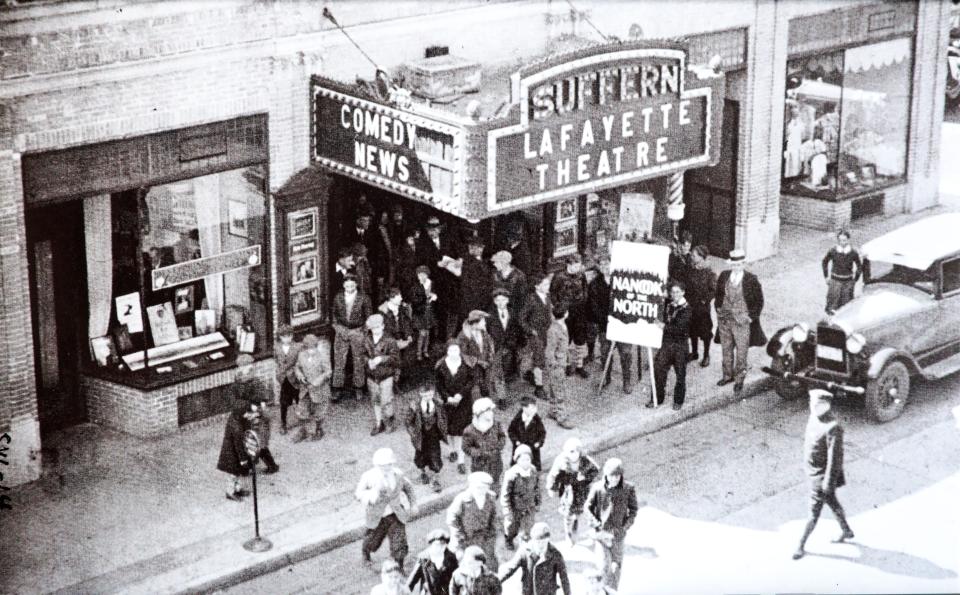
The original Lafayette marquee was square (today's circular one came decades later). It read "Suffern" in lights across the top, with Lafayette Theatre in changeable marquee letters across the front.
Walking past the fireplace in the lobby, patrons entered a vast auditorium with wide aisles. The screen was huge, tucked behind a vast proscenium arch. There was an orchestra pit beneath the stage, and a spot for the organist on the right edge of the pit.
Air-conditioning arrived in 1934 and the original organ was removed, deemed obsolete in the age of talking pictures. It would be nearly 60 years before another organ would become a Lafayette fixture.
You can watch the silent "Scaramouche" online, but be prepared to work a bit. Modern audiences following along are struck by how few title cards there are, how much must have been conveyed by the organist, to build suspense and fill in the many blanks.
“What you have to remember is they didn't have the distractions that we have today,” said village historian Craig Long said. “For them, it was awe-inspiring. To go to a cavernous place like that and to sit there and to watch something on screen.”
Theater's schedule takes a hit: Suffern's Lafayette Theater, snubbed for state grant, scales back schedule
A jaw-dropper, still
Even with modern distractions, first-time visitors are in awe at first sight of the Lafayette, a reaction that owner Ari Benmosché calls “my candy.”
“It’s my favorite part,” he said. He’ll encounter someone who’s new to town, who walks by during a street fair or happens to catch Benmosché out front, and asks, simply: “What is this place?”
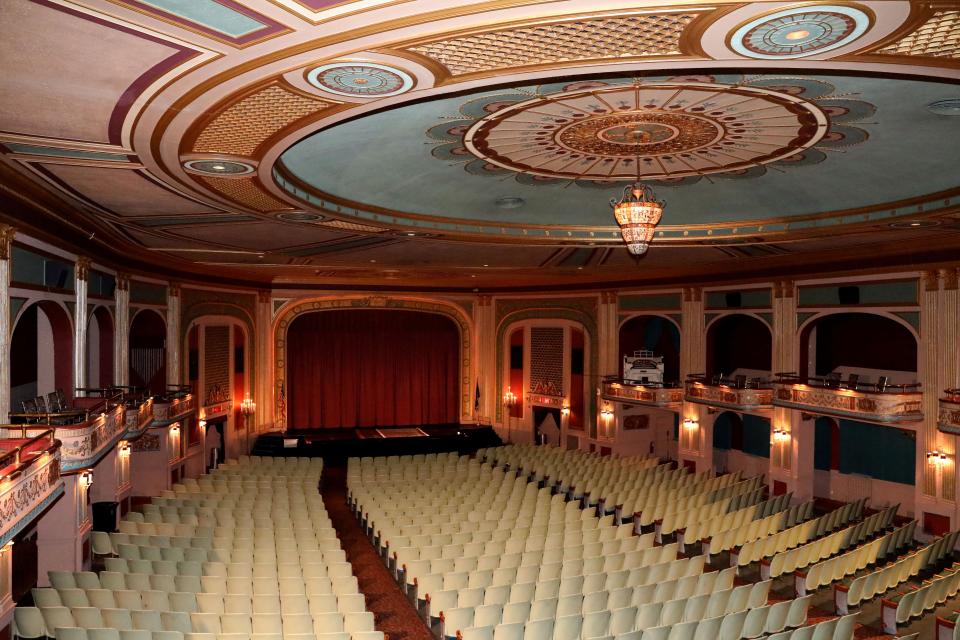
He ushers the unsuspecting first-timer through the unassuming lobby, explaining that it costs nothing to look inside.
“I let them in and they walk in and they’re like: ‘Whooooooa!’ It's the majesty of the place.”
Sometimes, if the first-timer’s timing is just right, Dr. Dave Kopp is seated at the console of “The Mighty Wurlitzer,” the organ that has been filling the theater with vibrato since Kopp and the New York Theatre Organ Society installed it in 1992.
“It wasn't just the film that transported them to another place,” Kopp said. “It was the building where they were watching it. They didn't have anything like this at home. Under a huge chandelier. And the opera boxes.”
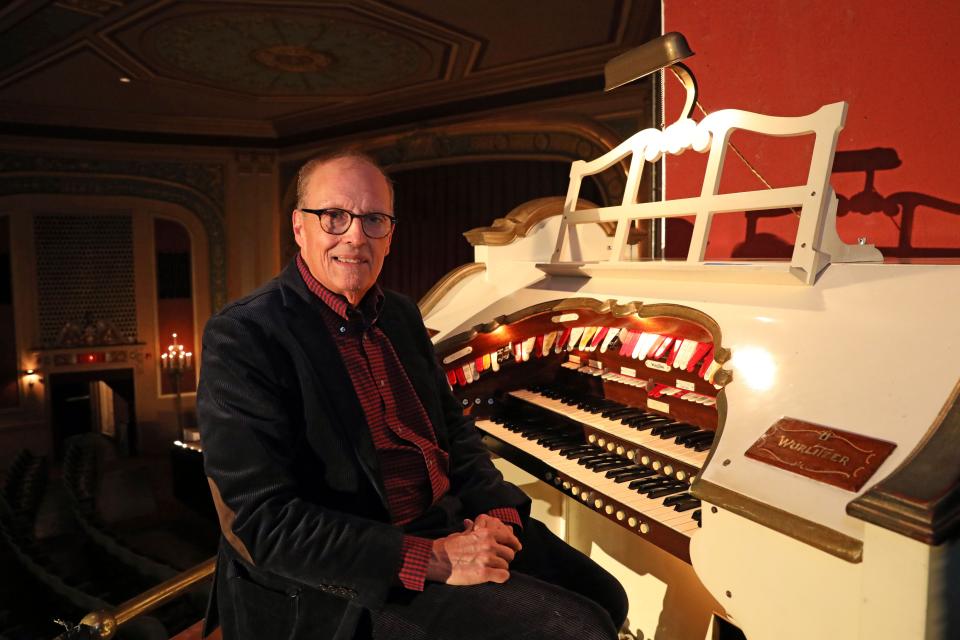
The Lafayette has been forever remaking itself to attract an audience. In 1927, a mere three years after it opened, its popularity inspired a major renovation.
The opera boxes — including the one where the Wurlitzer console resides — were added. So, too, was a rotating crystal chandelier that reflected colored spotlights trained on it. Sconces were added, as was ornamental plasterwork imported from France.
"These are businessmen, and they begin to make money and they realize that they can make this even more posh than it was," Long said.
"The Jazz Singer" in 1927 ushered in talkies, but it wouldn't be until March 7, 1929, that the Lafayette was wired for sound and presented its first talkie, "Alias Jimmy Valentine," about a convicted safecracker who falls in love with a banker's daughter. It was MGM's first foray into talkies and was a hybrid: the last two reels had talking in them; the rest was like a regular silent film, with titles.
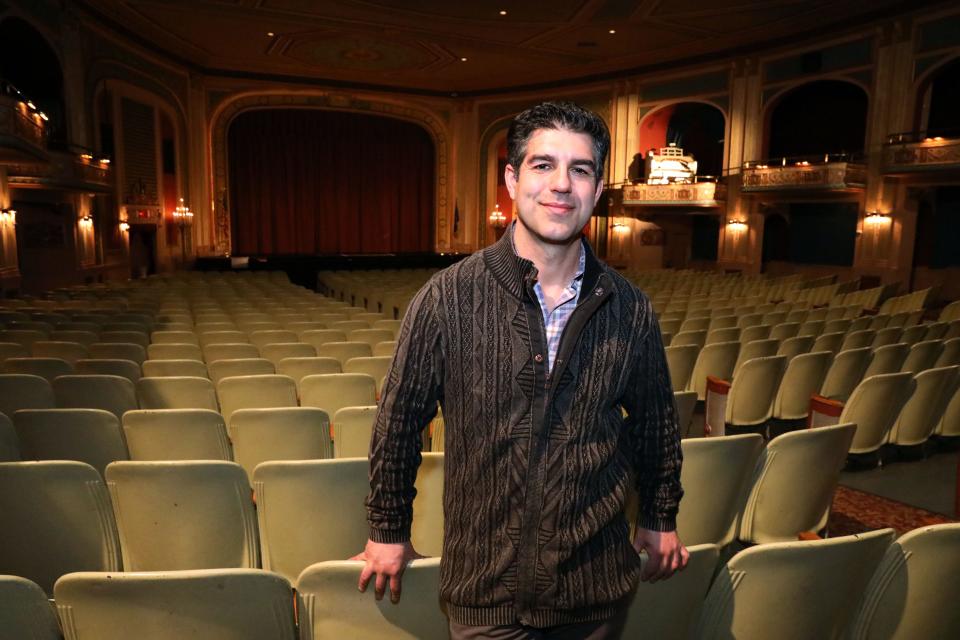
Outshining other movie options in town
Long, the historian, said there were plenty of movie options in Suffern in the early 1920's.
At the corner of Lafayette and Chestnut, a wooden building housed a street level drug store and an ice cream parlor, but up a flight of stairs was the Suffern Opera House, where movies first arrived in the village.
Farther up Lafayette, at No. 70, was the Strand, once called the Liberty Theater, or the People’s Amusement Palace. Before that, it was the village’s first Catholic Church, St. Rose of Lima, until Sacred Heart Church was built at what was then the edge of downtown. In its declining years, the Strand would be nicknamed “The Itch” by locals, a reference to non-ticket-buying vermine that might accompany patrons home.
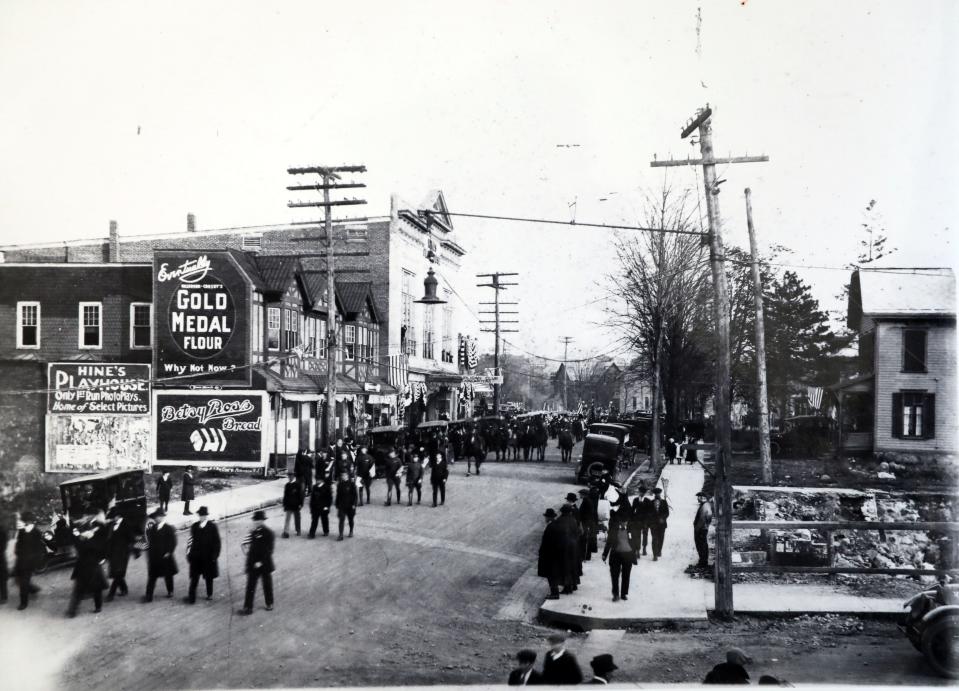
Up a bit from the Strand, at 92 Lafayette, is the Hines Play House, which opened in 1914 offering “vaudeville and motion pictures.” (The building façade still bears its original name.)
But nothing touched the Lafayette, which instantly endeared itself to Suffern. The high school held its graduations there into the 1940's. It hosted political events and Avon Christmas parties and Depression-era benefits for the unemployed.
"As a kid going to the Lafayette Theater, you just kind of took it for granted until you went to New City or Nanuet, and you realized that you were in a theater that was modern and whatnot," Long said. "I was used to this palatial movie palace."
"The Lafayette Theater has always been kind of home for me," he said. It also spoke to the future historian in Long. "It's a tangible link to our past. We have that gem."
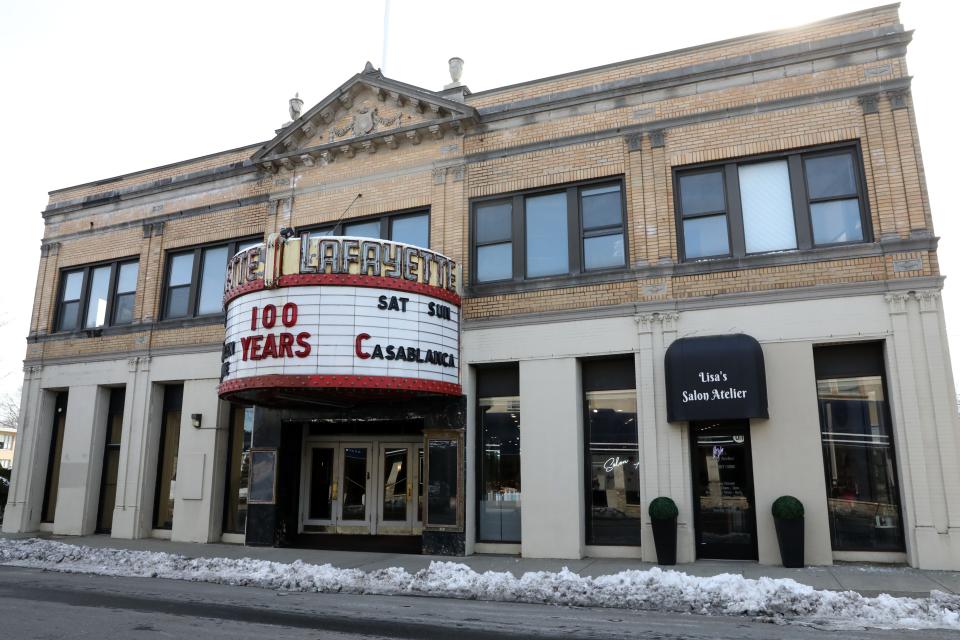
Two boys, 10 years, 3,120 movies
Generations of Suffern kids grew up at the Lafayette, including one who would eventually be the toast of Broadway.
Thomas Meehan, the Tony-winning playwright, wrote the books for “Annie,” “The Producers” and “Hairspray." Before that, in a 1971 article in The New York Times, Meehan reminisced about "coming dazedly of age in Suffern."
"I knew almost nothing of the world beyond Suffern other than what I read in books or learned from going to the movies," he wrote.
“At the local movie house, the Lafayette Theater, on Lafayette Avenue, the double‐feature program was changed three times a week, and my brother Bob and I indiscriminately turned up at the box office whenever there was a new show to be seen,” Meehan wrote.
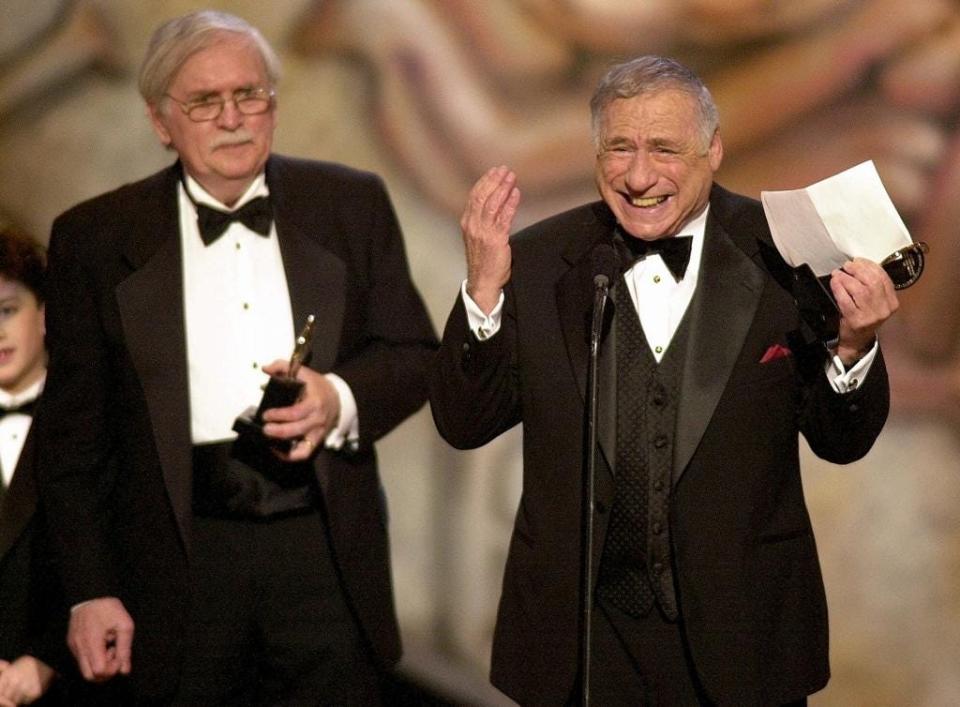
“For 10 years, as a matter of fact, from about 1938 to 1948, my brother and I regularly saw six movies a week at the Lafayette, or 312 movies a year, or a mind‐boggling total of 3,120 movies during the entire period.”
The Meehan boys loved the Lafayette most on Saturday afternoons when the double feature was supplemented by short films that could include ""a couple of cartoons, a Pete Smith specialty, a Three Stooges comedy, 'The Passing Parade,' a newsreel, a Popular Science short and — ah! — a James A. FitzPatrick travelogue — that is, one of those 10‐minute Technicolor tours of some faraway place that always ended with the sun slowly sinking in the west."
Young Tom Meehan soaked it all in, creating a cultural foundation that would stand him in good stead. So did his brother, Bob, who'd go on to become Rockland's DA and a County Court judge. (Tom died in 2017; Robert in 2004.)
Marquee moments and darkest times
Some of the Lafayette's brightest recent moments came with the house full, as in 2017 when local 9/11 hero Welles Crowther's story of sacrifice came to the big screen in "Man in the Red Bandana." Or when local singing sensation Grace Vander Waal packed the place for a concert in 2016.
"The experience becomes more intense the more people that are in here," Ari Benmosché said.
There have been setbacks. In January 2020, New York state rejected the Lafayette's application for an economic development grant, prompting Benmosché to keep his theater dark Mondays through Wednesdays.
Within weeks, the pandemic hit.
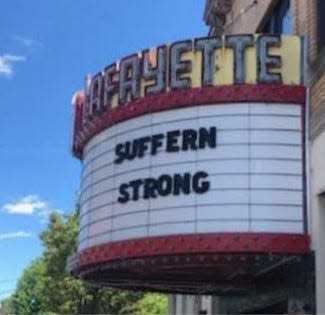
One might think the Lafayette's darkest hours were in COVID times, when social-distancing regulations forced it to close its doors.
They were dark, to be sure. But, conscious of the theater's importance in the community and its high profile, Benmosché updated the theater's marquee regularly with words of comfort and support, using Hollywood quotes to reinforce public service announcements.
"Why do you wear a mask?" — Fezzik (from "The Princess Bride")
"We are the music makers and we are the dreamers of dreams" — Willy (from "Willy Wonka & the Chocolate Factory")
"Beneath this mask there is an idea, and ideas are bulletproof" — V (from "V for Vendetta")
"Remember Red. Hope is a good thing." — Andy (from "The Shawshank Redemption")
And, simply, Suffern Strong.
X for extinction
The darkest time was when TV and the times took a direct hit at moviegoing behavior, when the quality and quantity of films ebbed, leading to a desperate and seemingly unthinkable decision for a venue so tied to its community.
In the early '70s, the Lafayette showed X-rated movies.
"There was such an uproar, it was almost sacrilegious in that theater, to have that kind of stuff," Long said.
The Lafayette closed its doors in October 1973, with "Fritz the Cat" and "The Cheerleaders" on the marquee.
But it reopened in June 1974, without the X's.
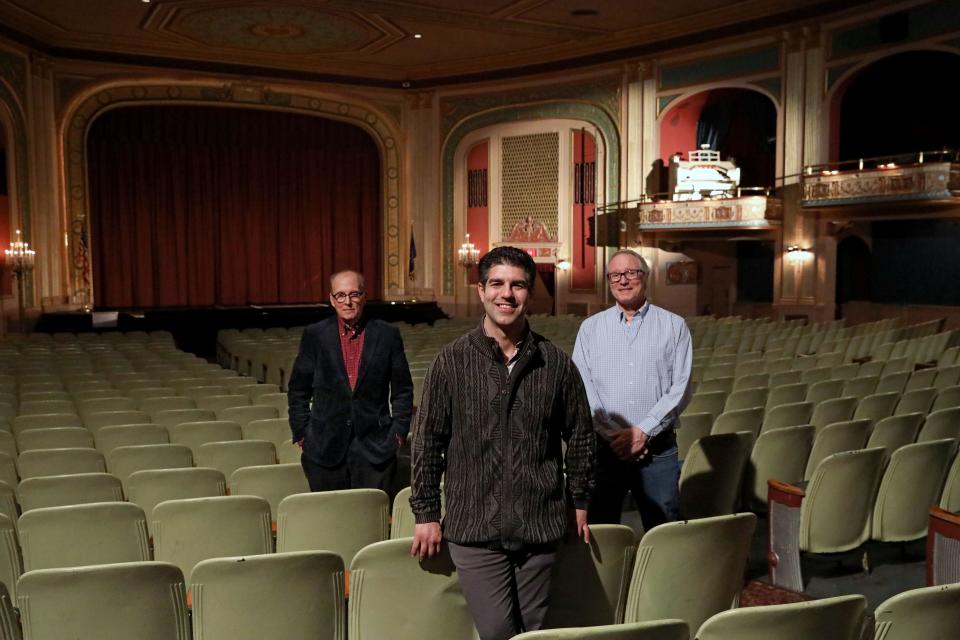
Angels and acolytes
The 100-year story of the Lafayette isn't told without mentioning the stewards who managed to keep the lights on and the single screen intact, who saw its value, who championed it.
People such as Al Venturini, who owned a slew of Rockland theaters from the '80s to 2000, including the Lafayette. It was on his watch that the Wurlitzer was installed. He now lives in Florida.
And Long, who made a case for the theater's inclusion on historic preservation lists to save it from the wrecking ball. Those efforts were eventually abandoned, but Long's campaign kept eyes on the Lafayette at a time when things could have gone differently.
And Phil Tisi, who struck a deal for the Town of Ramapo to enter into a public-private partnership with the Lafayette and give senior citizens a film series at the theater. Tisi died in the first weeks of the pandemic, in April 2020, his passing was marked on the Lafayette marquee.
And Robert Benmosché, Ari's father, who lived in Wesley Hills and wrote the check that saved the Lafayette — reported in The Journal News on March 2, 2000, the day before the theater's 76th birthday. Benmosché, the onetime head of MetLife, went on to rescue AIG after its bailout. He died in 2015.
And Nelson Page, who ran the theater for the Benmosché family for more than a decade.
And Ari Benmosché, who has spent 24 of his 45 years overseeing the Lafayette.
"It started out with my dad saying to me: 'All right. I bought it. Now you go figure it out,'" he said.
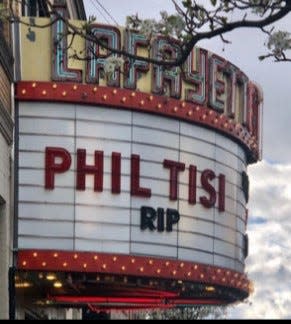
In those years, he has also developed a real estate career and now lives in Connecticut, making time spent at the theater precious. He was there on a recent day to supervise the fixing of some windows.
Just as there are inevitably always things to fix in a 100-year-old building, there was an inevitability to the fact that the pandemic wouldn't mean the end of the Lafayette.
"We didn't know how we would be back," Benmosché said. "We didn't know what being back would look like. We were dealing at those times with cleanliness protocols and all sorts of requirements. And would people be comfortable? But we were committed and we weren't going anywhere."
Nowhere but the corner of Lafayette and Washington.
Nowhere but a movie palace where bills and bosses — and, yes, sledgehammers — fade away when the lights go down.
Picture that.
Reach Peter D. Kramer at pkramer@gannett.com.
The Lafayette’s Centennial Celebration
Suffern's Lafayette Theater will mark its 100th anniversary next weekend with three special events.
March 1, 7:30 p.m. | “Metropolis” — Fritz Lang’s silent 1927 science-fiction masterpiece “Metropolis,” accompanied live by organist Brett Miller, playing his arrangement of Gottfried Huppertz’s original score. Tickets: $6.
March 2, 7:30 p.m. | “Neil Berg's 100 years of Hollywood” — Rockland’s award-winning composer Neil Berg brings his celebration of Hollywood music to the Lafayette stage, with a mix of Broadway veterans (and a few surprises) singing songs that made Hollywood famous, from Jolson to “Titanic” to Disney and beyond. Tickets from $25.
March 3, 1 p.m. | “Everybody Should Be in A Band” — A documentary following participants in Music for Life Creative Arts Therapy, tapping into their love of music. Followed by a live performance by some of the film’s subjects. Free.
Tickets at lafayettetheatersuffern.com
This article originally appeared on Rockland/Westchester Journal News: Suffern NY historic Lafayette movie house turns 100

